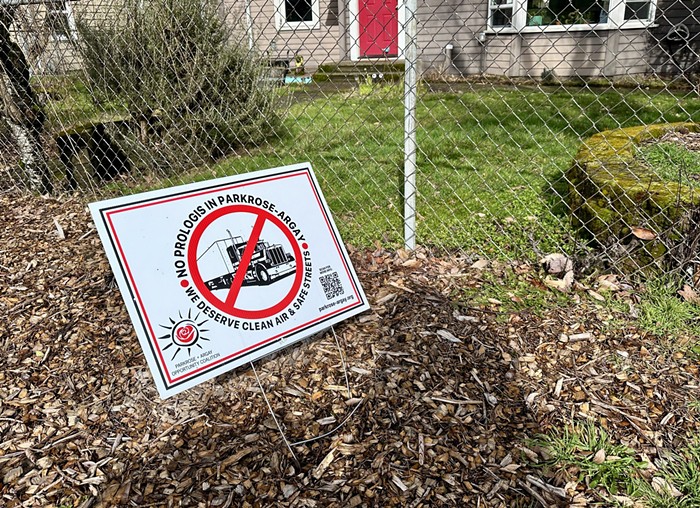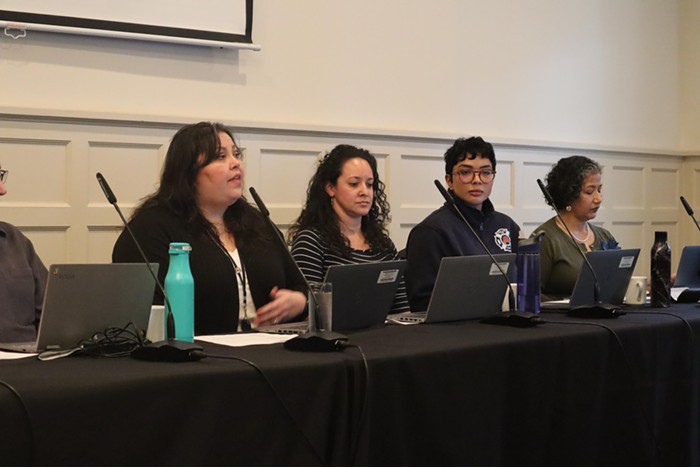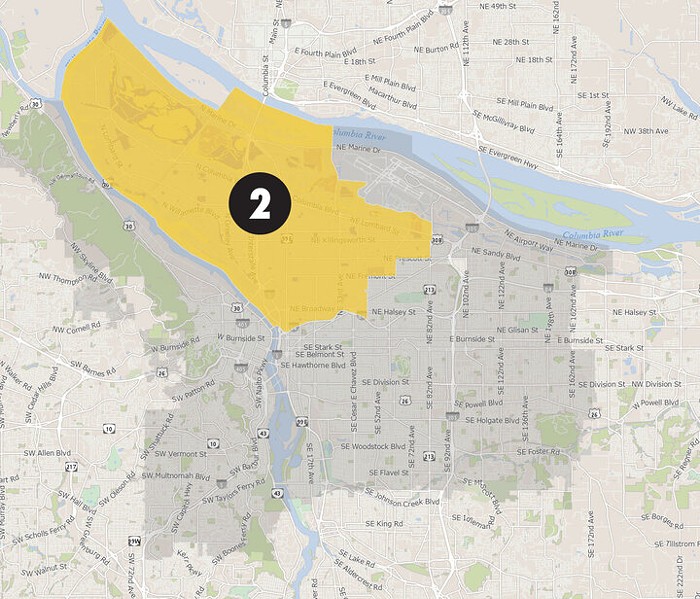When he ran for mayor, Sam Adams pushed the Portland Plan—a strategic long-term urban planning document—as “the single most important opportunity that any council has had for 25 years” to shape the future development of Portland. The plan would form a physical, economic, social, and cultural blueprint for Portland’s next 30 years, he said.
However, instead of focusing on the long-term, citywide planning prescribed by the Portland Plan, Adams has pushed a series of ambitious developments on aggressive timelines since taking office. The swift approach has some planners and architects nervous. George Bush Sr.’s staff famously nicknamed Portland “Little Beirut” in the early 1990s, but some say “Little Dubai” might be more appropriate these days, in reference to the wildly overdeveloped Middle Eastern nation.
In the last six weeks, Adams has thrown his energy into a $247.5 million convention center hotel in the Lloyd District, a $40 million Major League Soccer stadium at PGE Park, and on April 7 he announced the demolition of Memorial Coliseum to make room for a new Minor League Baseball stadium and entertainment district in the Rose Quarter.
“I think it’s fine to make plans for the entertainment of our citizenry. But I hope this doesn’t cause the city to lose focus on the most important work of the planning bureau, which is the Portland Plan,” says Gil Kelley, who came up with the Portland Plan and, until Adams took office, was the city’s top planning director. Adams merged the city’s planning bureau with the bureau of sustainability in January, shuffling Kelley and another top urban planner, Arun Jain, out of their jobs.
“We do not lack plans, we lack action, stuff coming up out of the ground,” said Adams of the Rose Quarter last week. Its proposed redevelopment is emblematic of Adams’ recent bold, fast-paced approach. Adams’ office, city planners, and representatives of the Cordish Company, the multinational developer the Trail Blazers chose to revitalize the Rose Quarter, met for an intense 48-hour work session last week, hoping to hash out a multi-million dollar redevelopment plan for council to vote for on April 22. But there are questions: For a start, economists doubt the development will make money...
“It’s just a rehash of the entertainment vision they first had when they built the Rose Garden, and that didn’t work. But we’re trying it again,” says economist Bill Conerly of Conerly Consulting, echoing several other economists consulted by the Mercury. Then there’s the question of whether the development is right for Portland.
“In Portland, we should be looking at our success,” says Portland Spaces contributor Mike Thelin. “It tells us that you can’t build a community unless there’s a neighborhood there to begin with. Otherwise you create these dead zones.”
At last Tuesday’s press conference, planners said the Rose Quarter would resemble Cordish’s redevelopment of downtown Kansas City, Missouri, now dubbed the “Power and Light District.” Adams’ chief of staff, Tom Miller, and senior planner at the Portland Development Commission, Lew Bowers flew to Kansas City last year to tour the Power and Light District’s cluster of bars, restaurants, and music venues. “What I liked was that it seemed to be a real urban entertainment district,” says Bowers.
Headlines from Kansas City newspapers reveal the redevelopment has not gone smoothly. After receiving nearly $300 million in public money, the district is not meeting its revenue forecasts—in part because Cordish missed construction deadlines. The president of Cordish has sent Kansas City’s mayor abrasive all-caps emails demanding the Power and Light District receive top priority.
Adams says local businesses will be part of the “Portland flavor” of the Rose Quarter, but Cordish stuffed the Power and Light District with retail run by its own affiliate. The Kansas City Business Journal reported that Cordish invested $50 million in a group called Entertainment Concepts Investors, LLC, which owns three restaurants, two theaters, and a large music venue in the district.
Louisville, Kentucky, has had similar problems with its recent Fourth Street Live! project. The Louisville Metro Council publicly berated Cordish for using $950,000 in city money to bring its own sports bar to town.
“In our city they do whatever they want, over some pretty strong protest, and we just keep giving them money,” says Kelly Downard, a Louisville metro councilor who says Cordish wooed the Louisville mayor to secure a $1 lease on city land valued at $17 million.
In Kansas City, Cordish maneuvered to get a special “festival liquor license” that allows Power and Light patrons to drink outside. The city’s older, homegrown night-out district, Westport, has been denied a similar permit for four years.
“They actively target and crush other local businesses,” says a Kansas City business owner who asked to remain anonymous. “That’s what they do, that’s their business model.”
Cordish has said that for Rose Quarter to succeed, it will need a similar liquor license, setting up a bar-hopping zone across the river from Old Town.
Mayor Adams’ fast-paced style is also raising ire among preservationists, who are fighting to save Memorial Coliseum. On Monday, April 13, Portland’s chapter of the American Institute of Architects wrote in a statement that “an inadequate public process has failed to discuss” better locations for the baseball stadium. Architect Peter Meijer is spearheading an effort to list the Coliseum on the National Register of Historic Places—forcing the city to prove that the building is “no longer economically viable” before demolition. “But the Coliseum is viable, it pays for itself,” says Meijer.
“It’s the sustainability argument that arouses my strongest feelings,” says Val Ballestrem of Portland’s Architectural Heritage Center. “For a city that prides itself on sustainability, on doing all these green buildings… sustainability, sustainability, we hear it every day… why is it so easy for us to just knock something down and start again?”
“It depends on how you knock it down,” says Mayor Adams. “In the old days it would have just been jackhammered. But every part of the Coliseum will be re-purposed and re-used.”
Adams insists he isn’t taking Portland planning in a new direction, but that the Rose Quarter has suffered from an excess of public process over the years.
“We don’t have a strategic plan for the whole city,” he admits. “But this particular part of town needs action. This is a rare exception for Portland.”
In response to economists’ concerns about the viability of the district, Adams says: “There’s the concern and the theories, and then there’s the actual experiences,” adding that many Beavers fans come from outside Portland without their cars to visit PGE Park.
“The city will have total say on what the district will look like,” says Adams, when asked about other cities’ experiences with Cordish. “Cordish has done good enough work up to this date to be a good partner for us—but it’s going to be on Portland terms.”
"We are committed to developing a world class project that reflects Portland's unique and creative culture," wrote Kim Damion, director of Marketing for Cordish, in an email statement.


















